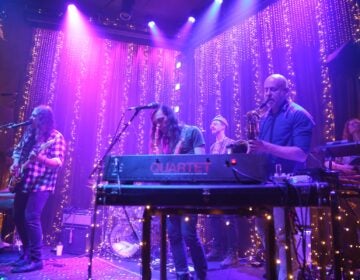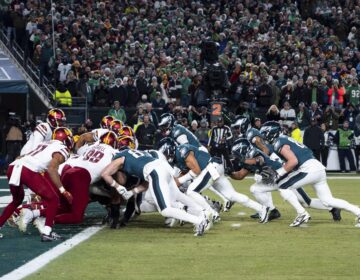Prohibition left lasting mark on national identity
The Prohibition era of the 1920s left an indelible mark in American history. It has affected everything from industry to politics to immigration to women’s right to vote.
At its most basic level, Prohibition is about booze, or rather no booze and the morality of it all. It evokes hundred of sounds and images of mobsters, graft, taverns, speakeasies, flappers dancing to great music.
But all that glamour and vice somehow blurred the deeply rooted social, economic and political cross currents that led to Prohibition. The 18th Amendment to the Constitution was a groundbreaking and ill-fated attempt at legislating popular behavior by forbidding the manufacture, sale or transportation of alcohol.
Historians say the era was marked by industrial growth, a struggle for political power and the influx of immigrant workers. Temple University urban history professor Bryant Simon illustrates the point with an old political cartoon.
“It shows a picture of a series of wooden barrels of booze containers walking down the street. What’s interesting is that they’re holding signs and none of these signs are about moral reform,” Simon said. “They’re all about the way in which booze creates disorder.”
“Prohibition, to my way of thinking, is not very much about moral reform but about political and economic reform and reforming the product of industrial society–workers themselves,” he said.
Prohibition a response to immigrants
“After the Civil War ended, hundreds of thousands of immigrants, Irish and Germans and Bohemians, and others from Central and Northern Europe began pouring into American growing cities and spread out across the countryside,” according to Ken Burns’ new documentary series “Prohibition.”
“They were eager to create new lives, but unwilling to give up old ways, increasing tensions with native-born citizens who thought they knew best how Americans should behave.”
“The whole history of immigrants and the way immigrants were seen in American life is central to understanding prohibition,” said Lynn Novick, Burns’ co-producer on the three-part public television series.
“We have waves of immigrants coming through the 19th century as well as into the 20th century. First of all, I think the biggest wave were the Germans and they brought with them a very different drinking culture than the Anglo-Saxons who were here before,” Novick said. “They drank on the weekends, they drank on Sunday afternoons in beer gardens, and they drank a lot of beer.”
A huge business grew up around that unquenchable thirst, Novick said. Breweries were built and the beer continued to flow. But the drinking culture brought about some resentment.
“There was a lot of feeling among native-born Americans that these people aren’t real Americans. And they don’t behave properly,” she said.
In Philadelphia, German immigrants opened beer saloons all over town, particularly in, well, Brewerytown. The neighborhood bars became gathering places for men looking for information and old country camaraderie.
Drink as the root of all evil
United under the banner of abstinence, followers of the temperance movement, which was very active in Pennsylvania, believed that all social ills would be resolved if only people did not drink. Industry was interested in a sober, more productive workforce.
“Prohibition was intended, in part, to reduce crime,” according to the film. “Instead it provided the small-time criminals with a world of opportunities to increase exponentially their profit and their power.”
As the underground illegal economy grew, operated mostly by ethnic mobs, it became crucial to sustaining the local and political machinery.
Although Philadelphia was not one of the largest industrial cities, it had its share of mob activity, said Temple’s Simon who is a consultant to the Prohibition-era HBO show “Boardwalk Empire.”
“To operate a speakeasy, you had to pay somebody and that paying of someone–pay to play is a grand Philadelphia tradition–that paying of somebody went to maintain a political machinery of some sort,” Simon said.
“I guess what I want to disabuse is this notion that freestanding Irish mobs and Italian mobs were running around. They were part of a pretty well-coordinated, very modern political machine that operates in the interest of perpetuating political power.”
Opening the door to women’s rights
Novick said another enduring legacy of Prohibition is the temperance movement’s role as a training ground for a generation of women who organized around the right to vote.
“At that time in the 19th century, asking for the vote was a far more radical thing to do than to ban alcohol,” she said. “The temperance movement actually gave the suffrage movement a bit of cover and legitimacy because it was seen as a much more radical thing for women to dare to ask for the right to vote.”
Philadelphia was then a cauldron of suffragist activism from Alice Paul to Lucy Burns to Lucretia Mott. Even those not directly involved in temperance work were inspired and emboldened by the political success of the women activists.
The first episode of “Prohibition” airs Sunday at 8 p.m. on WHYY-TV.
WHYY is your source for fact-based, in-depth journalism and information. As a nonprofit organization, we rely on financial support from readers like you. Please give today.




